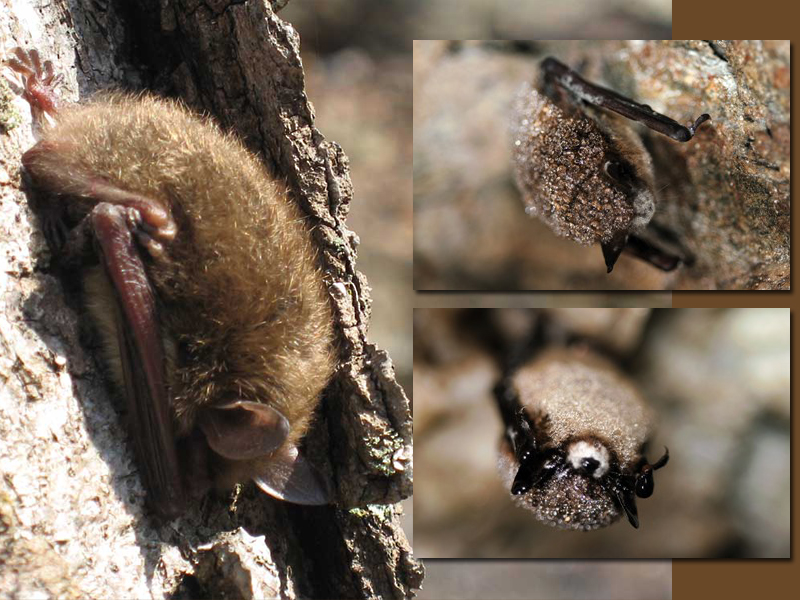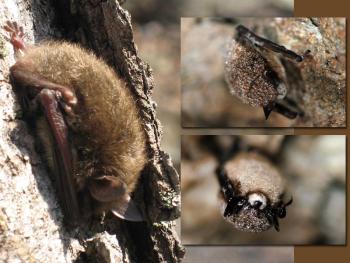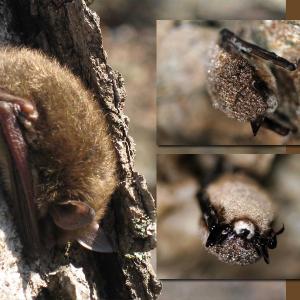Inland Fish and Wildlife biologists seeking information on Maine bat colonies
AUGUSTA — If you know you have bats in your neighborhood, or know where you often see bats on hiking trails or during camping trips, biologists with the Maine Department of Inland Fisheries and Wildlife want to know about it. They are looking for more information concerning bat colonies around the state as they continue to research the impact of white-nose syndrome in Maine.
The agency is asking the public to report bat sightings and information to support the Maine Bat Colony Identification Program by filling out an online survey. The information goes directly to state biologists.
"Certain species of bats have been hit hard by white nose syndrome. This online survey tool will help us locate existing bat colonies and give us more insight into the health of Maine's bat population," said IFW wildlife biologist Cory Mosby.
Maine is home to eight species of bats, two of which are on the state's endangered list: the little brown bat and the northern long-eared bat. The eastern small-footed bat is on the state's threatened list. Little brown bats like to raise their young in barns and warm attic spaces during Maine's summer.
| Did You Know? Despite popular belief, bats are friendly, useful creatures that protect humans from disease. • Bats can eat up to 800 mosquitoes in one hour (Courtesy Maine Audubon) |
Of the state’s eight bat species, some hibernate in Maine during the winter, called hibernating bats, and others migrate south for the winter, called tree bats. The bat species present in Maine are:
Hibernating bats
Big brown bat - Eptesicus fuscus
Little brown bat - Myotis lucifugus
Northern long-eared bat - Myotis septentrionalis
Eastern small-footed bat - Myotis leibii
Tri-colored bat - Pipistrellus subflavus
Tree bats
Hoary bat - Lasiurus cinereus
Silver-haired bat - Lasionycteris noctivagans
Eastern Red bat - Lasiurus borealis
Mosby said that for one species, the small footed bat, Maine is considered the northern extent of its range.
“It has never even been recorded being found as far north as Millinocket or Medway” said Mosby. “And since its range is more coastal, central and southern, it could be found in the Midcoast area along with the seven other species.”
Mosby said that the colony count underway is focusing on the big brown and little brown bats, because those are the species that utilize man-made structures more often.
“All eight species do something a little difference in their reproductive habit, so people would be most likely to see these two species in their barns, attics and other outbuildings,” said Mosby. “When people see bats leave their attics and eaves at night to feed, it’s most likely those two species and that’s the information we are looking for.”
He said gathering more information on the status of the little brown bat is key, because that species suffered catastrophic declines in the Northeastern region — as much as 90 percent. White-nose syndrome was first discovered in a New York cave in February 2006, according to the National Park Service, and then showed up in Maine in 2010, said Mosby. Biologists were able to calculate the losses, said Mosby, based on hibernacula counts, which is the means of counting hibernating bats in caves. But their small size also makes finding and counting them an imperfect science.
Biologists have seen a drastic decline in the number of cave-dwelling bat species, with the state's eight bat species divided into cave dwelling species, and tree dwelling species. White-nose syndrome is a fungal disease that is estimated to have killed more than 6 million bats in the eastern United States, with the cave dwelling species hit hardest by the disease.
According to the National Park Service, “bats with WNS appear to use up their precious fat reserves too quickly to stay in hibernation through the winter. The fungus is transmitted from bat to bat, but long distance, sudden leaps of the fungus are believed to have been facilitated by human activities. Thus far there are no cures for the disease which does not seem to affect humans or other animals. Scientists are cautious about applying any fungicide treatments in caves or mines which could risk disrupting delicate subterranean ecosystems. Before WNS, bats have been long-lived small mammals with average life spans of about 20 years; some little brown bats have been documented to live over 40 years. Though long-lived, bats reproduce slowly with each mother having only one pup per year. If bat populations ever recover to pre-WNS levels, it will take a long time.”
In Maine, it is estimated that some bat species have declined by as much as 98 percent. Bats are an important part of Maine's ecosystem, as they are a major predator of insects, including mosquitoes and agricultural insects.
How can you help bats? Maine Audubon offers the following tips:
How can you help?
• Keep sturdy snags (standing dead tress) in your yard
• Install a bat box on a south facing wall of your house
• Allow bats to use barns and outbuildings on your property (even attics, if safe)
• Avoid tree or insulation work during the breeding season (mid-June to the end of July) to avoid disturbing breeding bats and their young
• Most importantly, tell your family and friends how amazing and important bats are–education can go a long way to help bats
Related links:
• What is white-nose syndrome?
• National Park Service: White-nose syndrome confirmed in park bats (Fayette County, W. Va.) posted April 18, 2011
• Maine Audubon: Maine’s Struggling Bats (part one)
• Bat Conservation International
• Medomak Middle School students raise funds for bat research during Halloween
Event Date
Address
United States
























